In a Nutshell:
- DMDM hydantoin is used as a preservative in shampoo and other personal care products.
- It’s what’s known as a formaldehyde-releaser. It releases small amounts of formaldehyde over time, exposing you to formaldehyde as you use it.
- Formaldehyde is an irritant and carcinogen, which is why many consumers are switching to shampoo without DMDM hydantoin and other formaldehyde-releasers.
- Some big brands (such as TRESemmé) have been sued because of the formaldehyde in their shampoo.
- Some of the best formaldehyde-free shampoo brands include:
- See below for even more recommendations!
We’ve written before about sulfates in hair and personal care products like shampoo, conditioner, and body wash.
Sulfates are a common group of ingredients that have gained quite a bit of notoriety in the past decade, but there is another ingredient that’s actually less well-known, and possibly worse: DMDM hydantoin.
If you have heard of DMDM hydantoin before (maybe because of some haircare companies getting sued?) but are wondering why it’s bad, we’ve got you covered.
I’ll talk about why DMDM is toxic, and then I’ll give you a list of shampoo and conditioner brands without DMDM hydantoin.
Table of Contents: Formaldehyde Free Shampoo
- What is DMDM Hydantoin?
- Is There Formaldehyde in Shampoo?
- Class Action Lawsuit & DMDM Hydantoin Hair Care Products
- Other FRPs to Look For on Ingredient Lists
- Are There Regulations on DMDM Hydantoin?
- Other Products That Commonly Contain Formaldehyde & Formaldehyde Releasing Ingredients
- The Best Shampoo Without DMDM Hydantoin (& Conditioners Too!)
- 100% Pure
- Annmarie
- Acure (Most Affordable)
- Chagrin Valley (Plastic-Free / Zero Waste)
- Beautycounter
- Wellnesse (Best TRESemmé Replacement)
- Baby Shampoos Without DMDM Hydantoin or Formaldehyde
- Lastly, 4 DMDM-free brands we get asked about a lot
- Flowing Away From DMDM Hydantoin & Formaldehyde in Shampoo
This post contains affiliate links, which means we may earn a small commission if you choose to make a purchase. We only make honest recommendations.
What is DMDM Hydantoin?
DMDM hydantoin is a preservative, which means it keeps shampoo from growing mold and mildew and extends the shelf life.
In general, that’s a good thing, but not all preservatives are created equal. Some are more toxic than others.
DMDM hydantoin is what’s known as a formaldehyde-releasing preservative, or FRP. So formaldehyde itself is not added to a product, but the FRP releases small amounts of formaldehyde into the product over time.
Are Formaldehyde Releasers Toxic?
Formaldehyde is linked to various negative health effects, from skin irritation to cancer.
Despite the fact that it’s a naturally-occurring chemical, it becomes a problem when we’re exposed to higher levels.
Some people are very sensitive to formaldehyde, whereas others have no reaction to the same level of exposure. The National Cancer Institute warns that exposure exceeding 0.1ppm could cause short-term symptoms such as:
- watery eyes
- burning sensations in the eyes, nose, and throat
- coughing
- wheezing
- nausea
- and skin irritation
But according to the F.D.A., longer term, more chronic effects that are associated with formaldehyde can include:
- increased of headaches
- asthma
- contact dermatitis (rash)
- and cancer
People With Highest Risk for Formaldehyde Side Effects from FRPs
Sensitive populations like infants and children, the elderly, and chronically ill individuals should be extra careful when it comes to formaldehyde exposure. Hair and nail salon workers should also consider taking precautions because they’re exposed to so many more of these products at high levels on a daily basis.
So, while it’s not necessary to get rid of all the formaldehyde in our environment, we would do well to decrease the amount we’re exposed to where we can. This is why many people are switching to shampoos without DMDM hydantoin and other formaldehyde releasers.
Is There Formaldehyde in Shampoo?
Since DMDM hydantoin is an FRP (formaldehyde-releasing preservative), that means that if there is DMDM hydantoin in shampoo, there is formaldehyde in it too.
Not only that, but one 2015 study found that even MORE formaldehyde can be released when cosmetics and personal care products containing FRPs are stored for longer periods of time. That means your potential exposure to these chemicals increases if you buy in bulk or from discount stores where products have spent a long time on shelves.
Is DMDM Hydantoin Bad for Hair?
The issue with DMDM hydantoin isn’t necessarily that it’s bad for the hair itself, but that it’s bad for your eyes, nose, throat, and skin.
That said, because formaldehyde can cause scalp irritation, it could lead to hair thinning and reduced hair growth as these ingredients irritate the hair follicles.
Related:
Body
Tried & Tested: Best Natural, Non-Toxic Shampoo Bars (& Plastic-Free!)
I tested several brands of non-toxic & natural shampoo bars… Here are the pros and cons of each (+ what to look for in a safe & plastic-free shampoo bar!).
Class Action Lawsuit & DMDM Hydantoin Hair Care Products
In recent years, there have been a string of class action lawsuits against several companies because of DMDM hydantoin.
In Illinois, New Jersey, Pennsylvania, and Canada, Unilever has been sued after many consumers claimed that its TRESemmé keratin smooth color shampoo and conditioner cause scalp irritation and hair loss.
Because of this lawsuit, the F.D.A. updated its consumer warning about formaldehyde in hair smoothing products in March 2021.
Other brands that have been investigated for DMDM hydantoin include:
- Aussie
- Dove
- Finesse
- Got2b
- It’s A 10
- Keratin Complex
- Maui Moisture
- Nexxus
- OGX
- Paul Mitchell
- TIGI Bed Head
Other FRPs to Look For on Ingredient Lists
Not all preservatives are bad. (After all, we do want to prevent our hair and skin care products from developing mold and bacteria!)
In fact, there are even worse ones than DMDM hydantoin. One study compared eight different FRPs to find out which ones released the most formaldehyde. Here are the ones they studied, in order from worst (most amount released) to best (least amount released).
These are all ingredients you may want to look out for on your shampoo bottles.
- paraformaldehyde – PF
- diazolidinyl urea – DU
- dimethyloldimethyl hydantoin – DMDM*
- quaternium-15 – QU*
- imidazolidinyl urea – IU*
- methenamine – MA
- bronopol – BP
- poly(p-toluenesulfonamide-co-formaldehyde) -PTSAF
*The three chemicals with the asterisk are all tied.
As you can see, DMDM sits in the middle—it wasn’t the worst and it wasn’t the best.
In addition to the above, other names to look for on your ingredient list include:
- polyoxymethylene urea
- sodium hydroxymethylglycinate
- 2-bromo-2-nitropropane-1,3-diol (bromopol)
- glyoxal
Are There Regulations on DMDM Hydantoin?
Currently, FRPs are banned from use in cosmetics and personal care products in Japan and Sweden. The E.U. allows a certain amount of these chemicals, while also requiring proper labeling on products that do use them. Canada also has concentration restrictions on FRPs. There currently are not any regulations in the U.S.
It’s worth noting here that FRP sensitization rates are consistently higher in the U.S. than they are in Europe. (Sensitization occurs when someone develops an allergy to something when they’re exposed to it multiple times.) This is an example of why ingredient bans/restrictions are in place—and how they work!
Other Products That Commonly Contain Formaldehyde & Formaldehyde Releasing Ingredients
Here are some other common product categories that often contain FRPs:
- nail polish
- nail glue
- eyelash glue
- hair gel
- hair-smoothing products
- baby shampoo (!! keep reading for formaldehyde-free recommendations)
- body wash
- color cosmetics
- moisturizers and lotions
- hand soap
- and more
Related:
Body
What Is Sodium Laureth Sulfate In Shampoo? Is It Bad for Hair?
What exactly are SLS and SLES (two very common shampoo ingredients)? Is sodium laureth sulfate bad for hair? And what are the best sulfate-free shampoos?
The Best Shampoo Without DMDM Hydantoin (& Conditioners Too!)
While you’re looking for shampoo brands without DMDM hydantoin and sulfates, there are a few other ingredients you may want to watch out for. These ingredients aren’t FRPs, but they come with different issues. They include:
- Fragrance: Because of the “fragrance loophole,” brands can “hide” over 3,500 different chemicals in their products without putting them on the label. Some of these ingredients (such as phthalates) are toxic.
- Other problematic preservatives: Parabens are problematic because they are endocrine disruptors. Isothiazolinone preservatives are skin irritants.
- Retinyl Palmitate: Very common in shampoo, this ingredient can become carcinogenic when applied to the skin in the presence of sunlight.
Now, here are some of my favorite brands!
100% Pure

Price: $18-$45
100% Pure also carries a variety of DMDM- and toxin-free shampoo based on your hair type: Grow More (to encourage hair growth), Moisture Drench (for deep hydration), Glossing (to smooth frizz), Restorative (for damaged hair), Volumizing, Healthy Scalp (for dandruff, itching, and clogged pores), and more.
They also carry a Pro-Vitamin B5 Smoothing Hair Serum, which is a great hair treatment replacement for the toxic smoothing shampoo brands involved in those lawsuits!
Annmarie

Price: $40
This is one of the best shampoo brands without DMDM hydantoin. It’s MADE SAFE certified, made in the U.S.A., and is focused on using high-quality and consciously sourced botanicals.
It even comes with a 30-day money back guarantee—that’s how confident they are in their product!
Acure (Most Affordable)
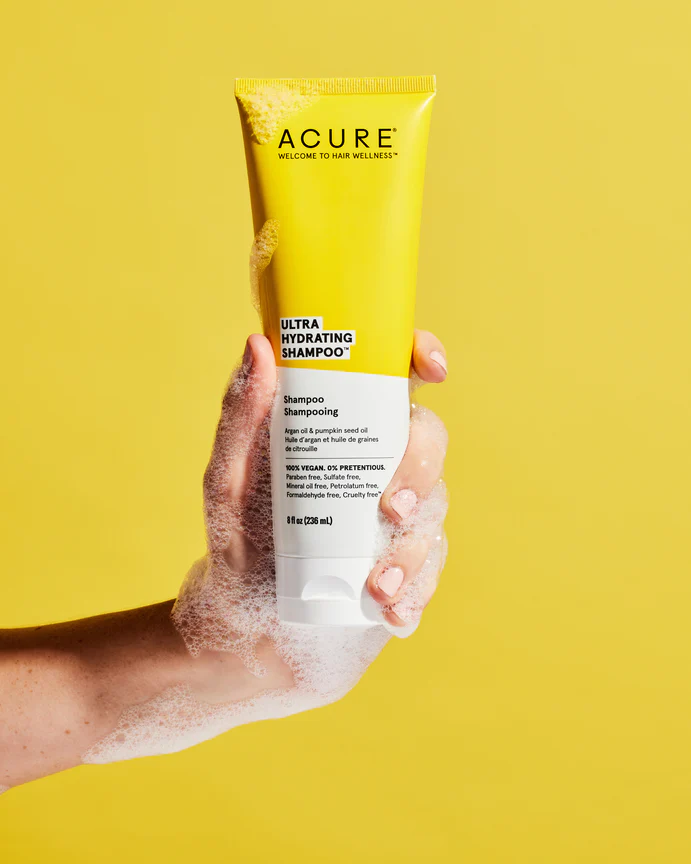
Price: $5.99-$9.99
Acure is great for all hair types because they offer several different types of shampoos: Simply Smoothing, Ultra Hydrating, Curiously Clarifying, Vivacious Volume, and Buildup Balancing.
Their products have been free from parabens, sulfates, mineral oil, petrolatum, and formaldehyde since they first started in 2010.
Plus, this affordable non-toxic shampoo is easy to grab in-store at Target!
Buy Acure at:
Chagrin Valley (Plastic-Free / Zero Waste)

Price: $3.40-$10.50
If shampoo bars are more of your thing, check out Chagrin Valley. They have several different kinds of shampoo for all hair types, from Chamomile and Citrus to Coconut Milk to Neem & Tea Tree shampoo, and more.
They also have several Conditioning Vinegar Rinses, which help to remove buildup from chemical shampoos, dry shampoo buildup, or other impurities.
Chagrin Valley’s products are almost entirely plastic-free and everything is made with 100% organic, non-GMO, locally sourced, and minimally processed ingredients. The brand is also a member of 1% for the Planet (just like us!).
Beautycounter
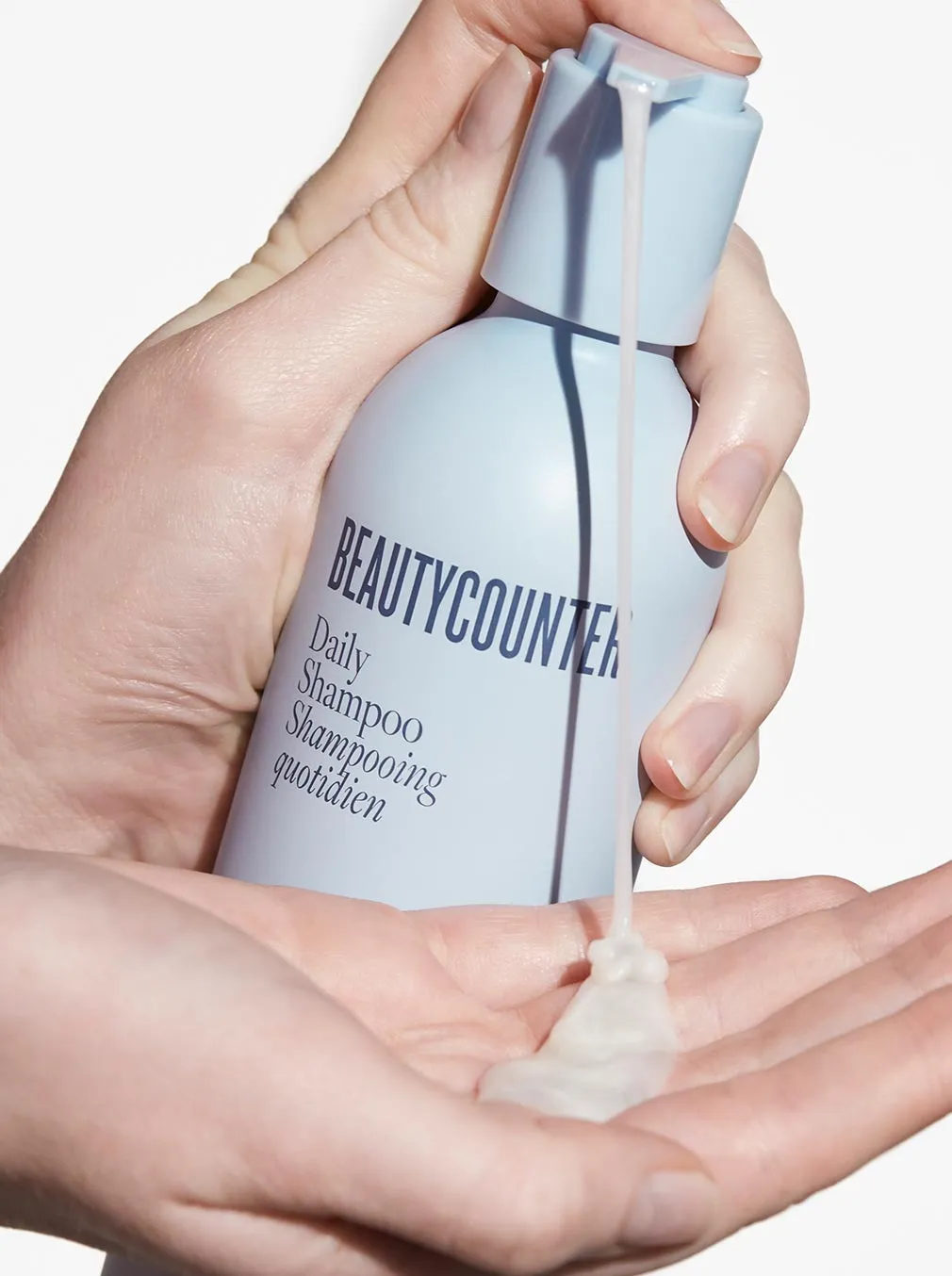
Price: $29
Beautycounter’s toxin-free Daily Shampoo and Conditioner is a popular pick from a trustworthy brand. This one is great for all hair types as well.
Wellnesse (Best TRESemmé Replacement)

Price: $20
If you’re looking for a smoothing shampoo to replace your TRÉSemme, check out Wellnesse. They have a Smoothing Shampoo, which is great for frizzy hair. Or try their Restoring Shampoo and Conditioner, which are great for all hair types.
Baby Shampoos Without DMDM Hydantoin or Formaldehyde
Honest

Price: $11.99-$17.99
Honest’s non-toxic baby shampoo comes in a variety of scents like Sweet Almond, Sweet Orange Vanilla, Lavender, and Fragrance-Free. It’s tear-free, made in the USA, and also doubles as a body wash.
Honest is also available at many big box and drug stores like Walmart, Target, CVS, Walgreens, etc.
And if you want to take a deeper dive into the Honest brand, you can check out this article.
Pipette
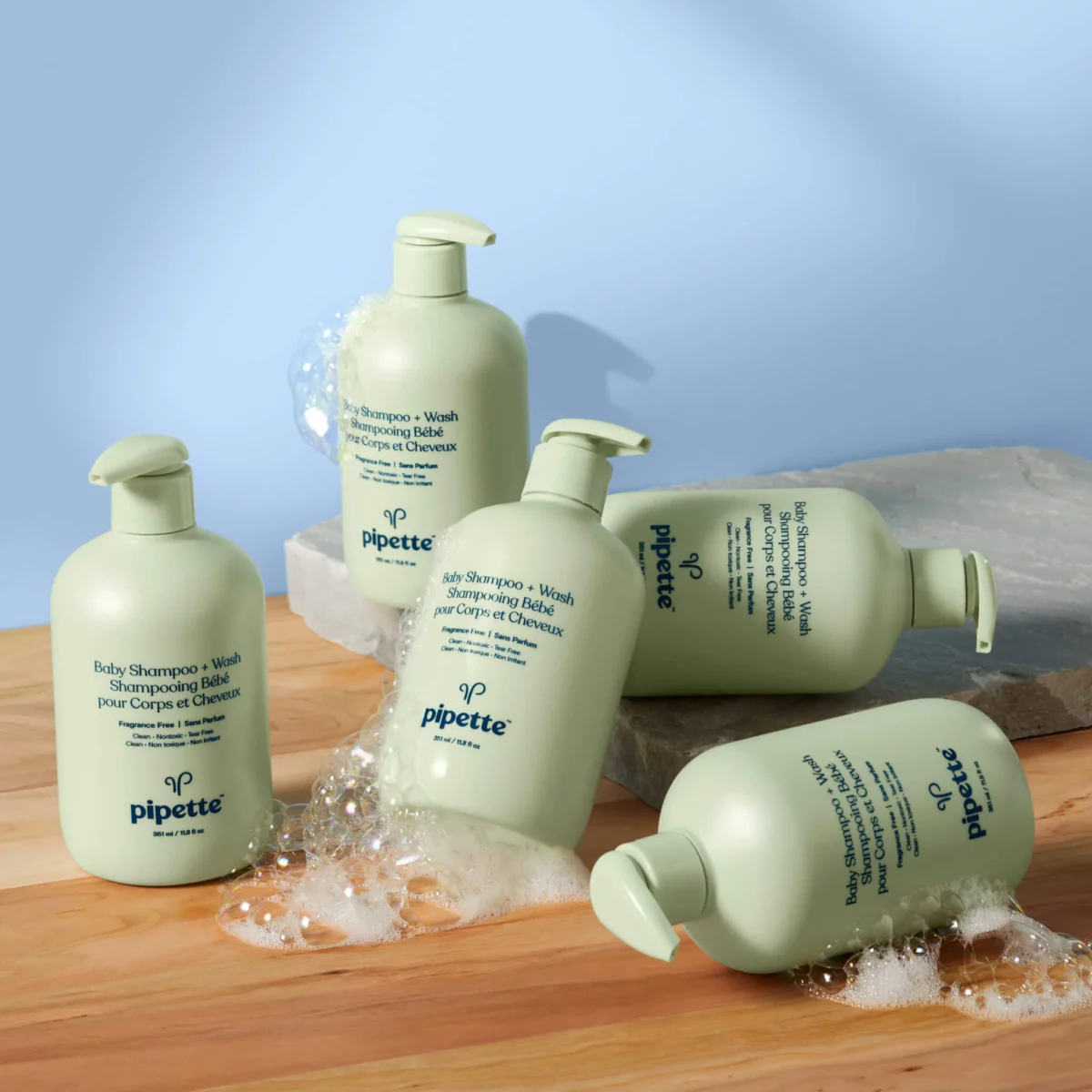
Price: $8.99
Pipette’s Shampoo + Body Wash combo comes in Fragrance-free, Rose + Geranium, and Vanilla + Ylang Ylang.
It’s dermatologist tested, pediatrician approved, and clinically-shown to improve skin hydration.
Healthybaby
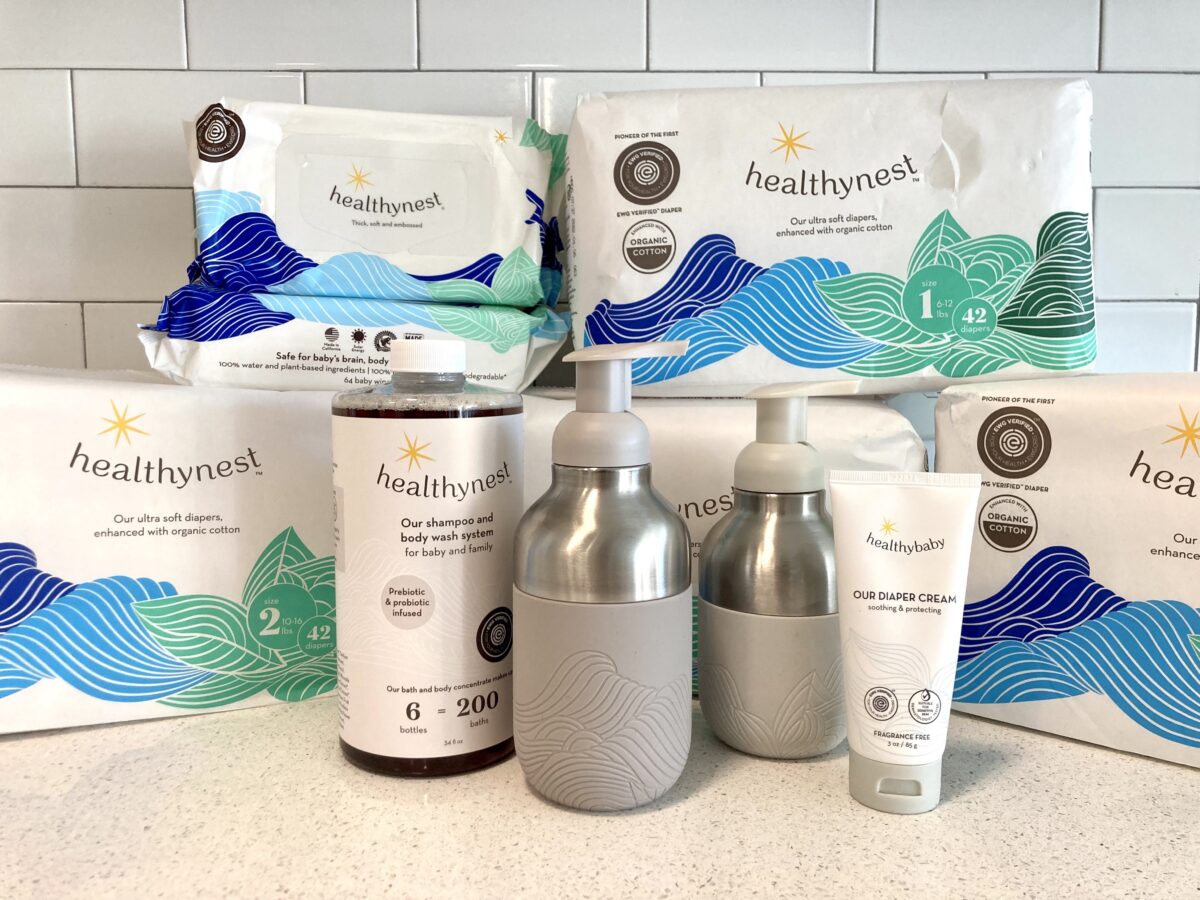
Price: $65 (Concentrate Refill) – $75 (Starter Kit)
Healthybaby’s Shampoo & Body Wash Combo is made with 100% natural ingredients, making it suitable for your little one’s sensitive skin. It comes in a concentrate, so one bottle lasts a long time. Just refill your foaming soap dispenser.
It’s EWG Verified, too!
Lastly, 4 DMDM-free brands we get asked about a lot
None of these common (and beloved) brands list DMDM hydantoin on their ingredient list.
- Raw Sugar Shampoo: Although Raw Sugar’s shampoos are free from sulfates and DMDM hydantoin, they still contain a few problematic ingredients, such as undisclosed fragrance and quats.
- Aveeno Shampoo: Although Aveeno does not list DMDM hydantoin on their ingredient labels, their shampoos contain other potentially toxic ingredients such as behentrimonium chloride (a quat), undisclosed fragrance.
- Pantene Shampoo: While it appears that Pantene’s shampoo is free from DMDM hydantoin, some of their other haircare products (like mousse and styling gel) do contain formaldehyde-releasers. Their products also contain other problematic ingredients like undisclosed fragrance and isothiazolinone preservatives.
- Garnier: Although Garnier’s shampoos don’t appear to contain formaldehyde-releasing preservatives, I don’t recommend them because they contain things like undisclosed fragrance, PEGs, silicones, artificial dyes, and other irritants.
Flowing Away From DMDM Hydantoin & Formaldehyde in Shampoo
When cleaning up your hair and skincare routine, switching to shampoo without DMDM hydantoin and other FRPs is a great step. Using non-toxic, Formaldehyde-free shampoo can help you lower your exposure to unnecessary toxins while preventing mild to severe hair loss and skin irritation in the short and long term!
PIN IT:
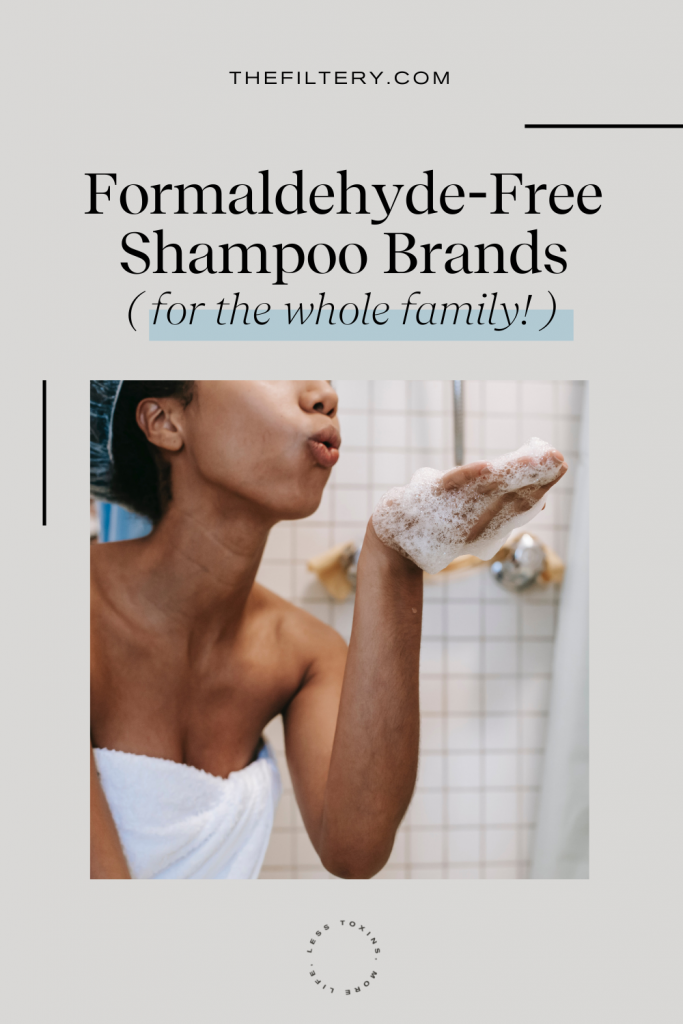
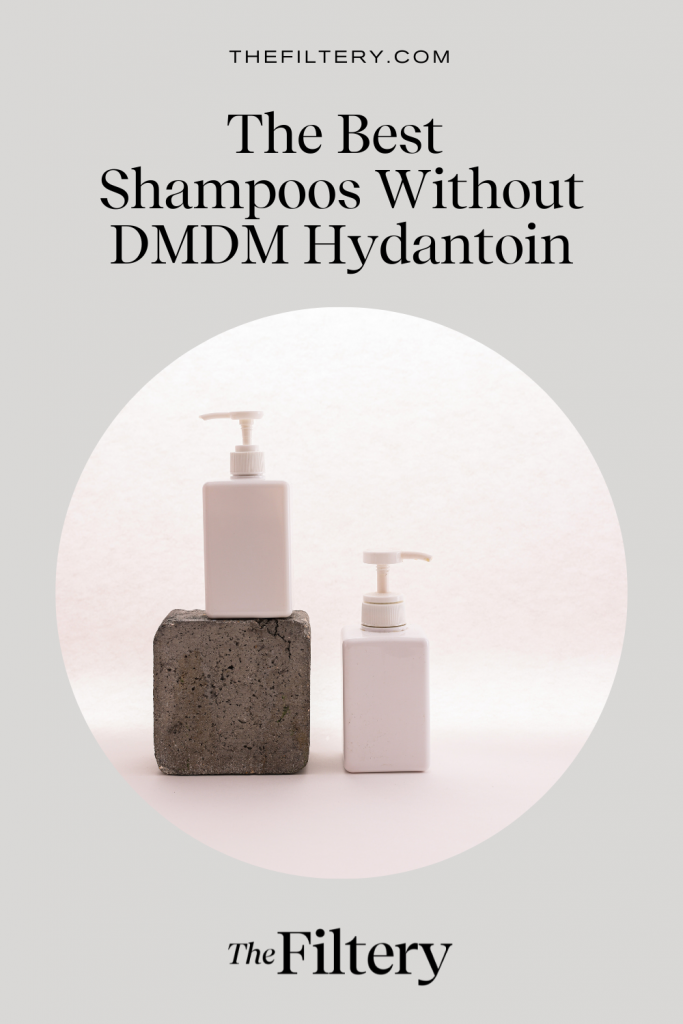


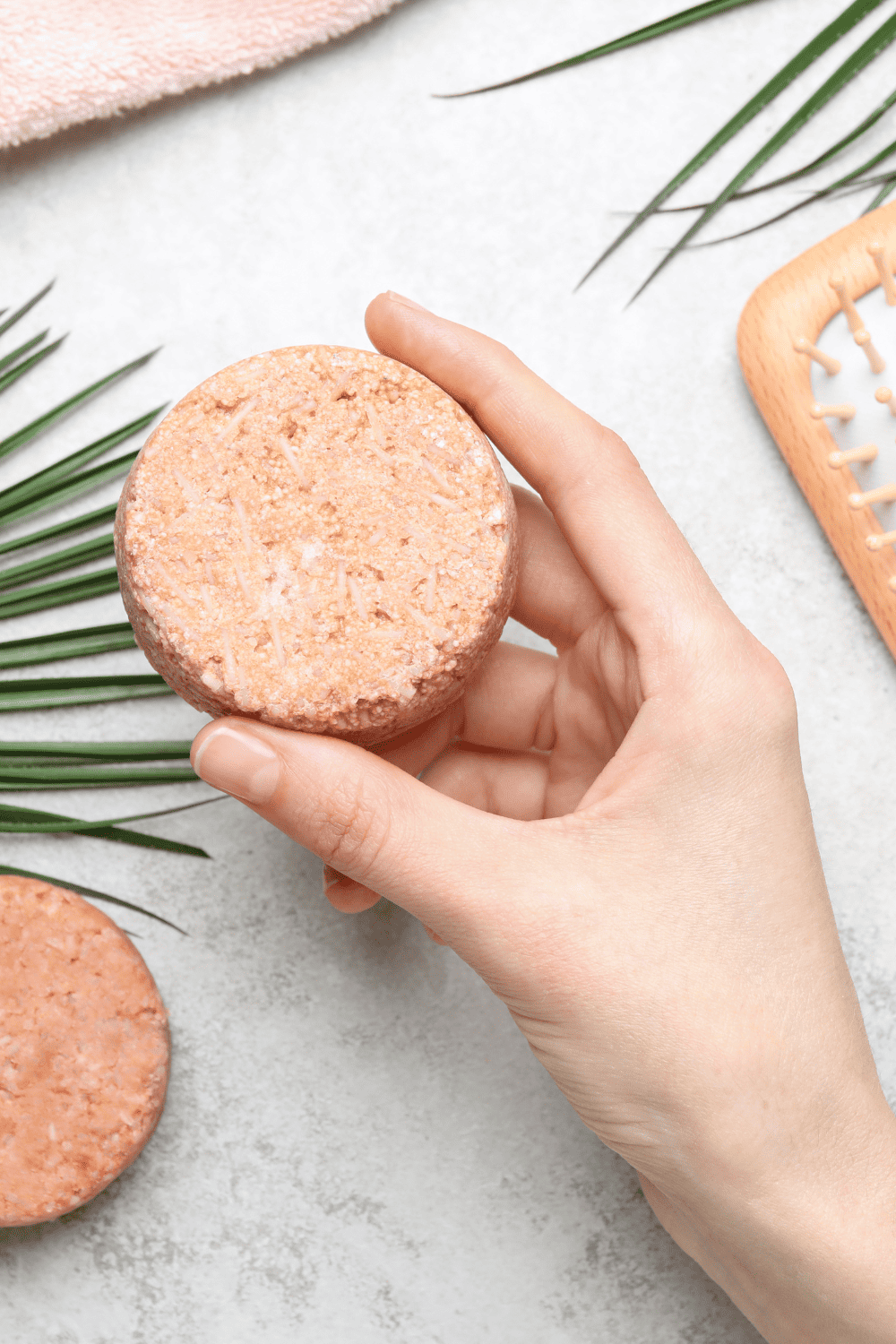

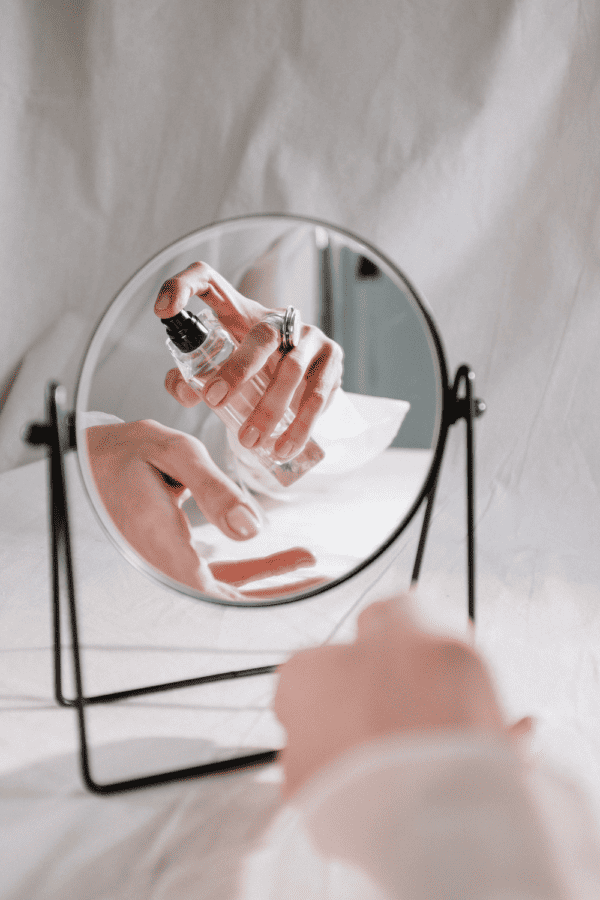
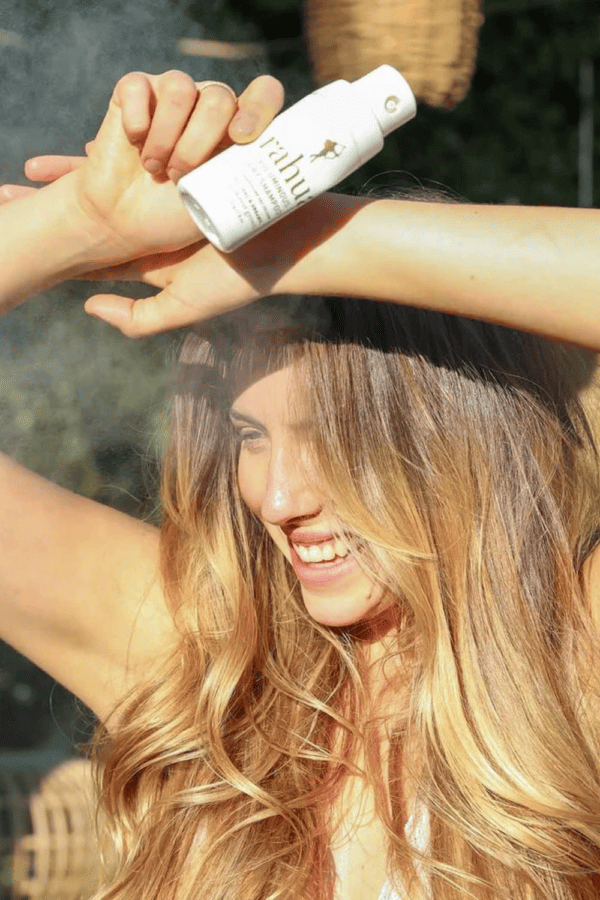
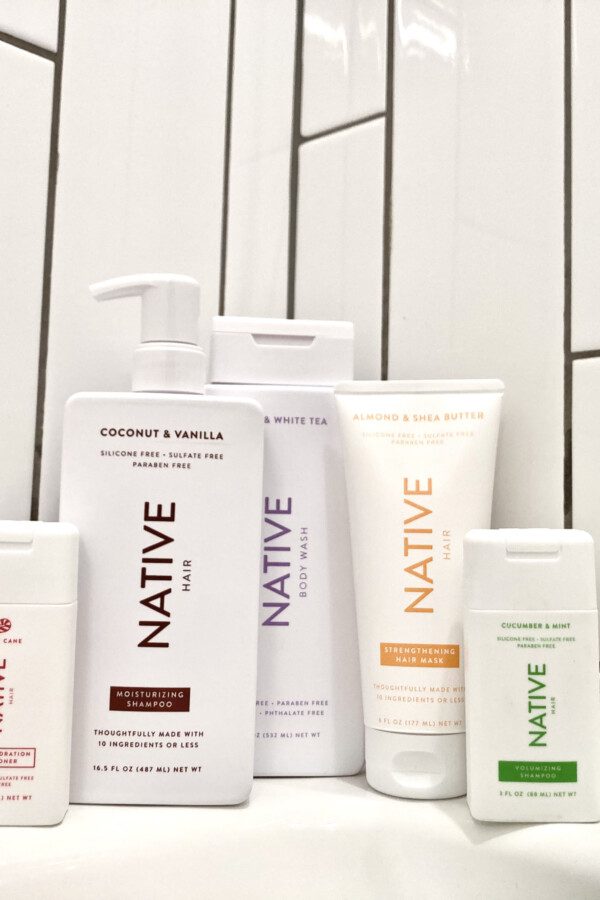
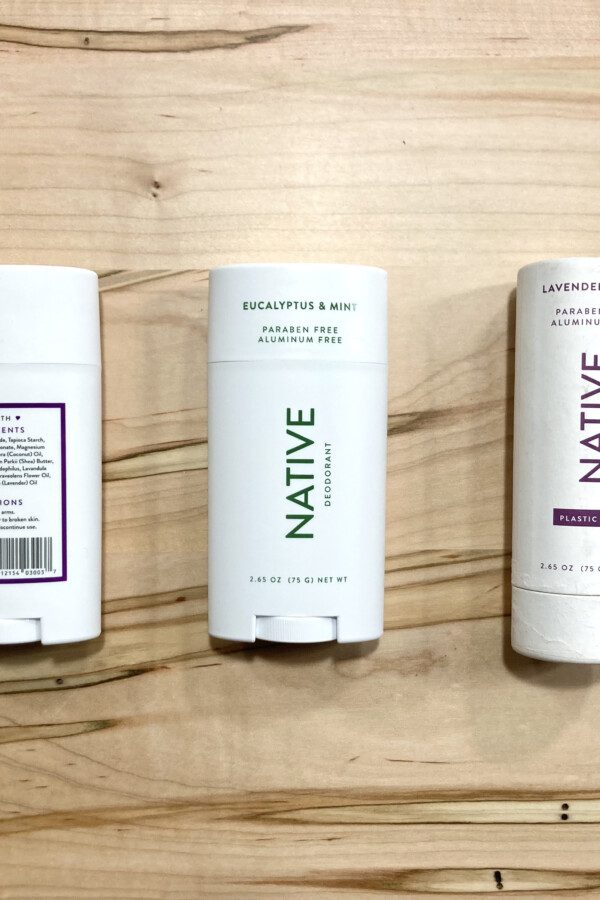
Is there a safe non-toxic men’s cologne?
What about toothpaste brands that are non-toxic?
Last,can you share non toxic suggestions for pet food?
Thanks for your awesome work!!!
Hi Annette,
For cologne, check out this article: https://thefiltery.com/clean-natural-non-toxic-perfume-brands/
For toothpaste, check out this one: https://thefiltery.com/best-non-toxic-natural-toothpaste/
We don’t have one for pet food at the moment, but I’ve added it to our to-do list! 🙂
Is Hibar shampoo bars non toxic?
They’re not the best, unfortunately. 🙁 They contain undisclosed fragrance, and I can’t find anything on their website that says they’re phthalate-free (which is one of the main concerns with fragrances). We actually have a shampoo bar post in the works, so stay tuned!